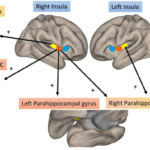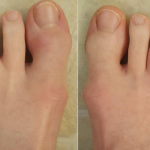
GrandeDuc/shutterstock.com
LONDON—Results from the extension phase of a Phase 3 trial for the IL-17A inhibitor ixekizumab in psoriatic arthritis (PsA) show that patients started on placebo, adalimumab and ixekizumab continued to show improvements in arthritis, dactylitis and ethesitis, said Philip Mease, MD, a rheumatologist at Swedish Medical Center University of Washington in Seattle.1
Dr. Mease presented the data in an abstract session at the Annual Congress of the European League Against Rheumatism (EULAR 2016)—a session that also featured the effects of conventional disease-modifying anti-rheumatic drugs (DMARDs) on TNF-inhibitor use and a debate over the value of indirect comparisons of adalimumab and secukinumab.
52 Weeks of Ixekizumab
Previous results through 24 weeks of follow-up found that ixekizumab was superior to placebo in ACR20 response for patients with active PsA who had not yet tried biologics.
The new results are through 52 weeks, with 381 of the 417 patients entering this extension period. Those with an inadequate response were switched from placebo or adalimumab at Week 16 to 80 mg of ixekizumab every two weeks or every four weeks. The others were switched at Week 24.
A total of 55.6% of patients on the every-two-week regimen and 48.9% of those in the every-four-week group achieved a Psoriatic Area and Severity Index (PASI) 100 response by the end of the 52 weeks. Improvements also continued to be seen in Leeds Ethesis Index scores and Leeds Dactylitis Index scores.
Although 102 patients, about half, in each group experienced some type of treatment-emergent adverse event—12 considered serious—only a total of three people in the extension phase discontinued their treatment because of adverse events.

Dr. Mease
“We are pleased to show this persistence of effect,” Dr. Mease said.
Synthetic DMARDs
In another study, researchers set out to clarify the effects of concomitant conventional synthetic DMARDs on continuation of TNF-inhibitor therapy.2 Other trials have tended not to fully adjust for confounding on this question, making their results less informative to clinical practice, or even “spurious,” said presenter Alexandre Sepriano, MD, a PhD student at Leiden University Medical Center.
Researchers studied patients with axial spondyloarthritis from the Rheumatic Diseases Portuguese Register who had started on a TNF inhibitor between 2001 and 2014. This totaled 954 patients.
Their analyses adjusted for confounders, including level of disease activity, use of other therapies and propensity scores to account for differences in patients taking DMARDs compared with those not taking DMARDs. The primary endpoint was discontinuation of the first TNF inhibitor. In the end, lack of efficacy was the main reason for these discontinuations—the top reason 55% of the time—followed by adverse events—31%. They didn’t find that conventional synthetic DMARD use had any measurable effect.
“Our results show no protective effect of conventional synthetic DMARDs for continuation of TNF inhibitors,” Dr. Sepriano said. This suggests there is “no benefit” to concomitant use of these drugs, researchers said.
Desiree van der Heijde, MD, PhD, professor of rheumatology at Leiden University Medical Center, said it is simply not worth doing indirect comparisons because it is nearly impossible to account for the differences.
Secukinumab vs. Adalimumab
Dueling studies that indirectly compared anti-IL17A secukinumab and TNF-blocker adalimumab set off a debate about the value of so-called “matching-adjusted indirect comparisons” and about the need for real head-to-head trials to help doctors making treatment decisions.3,4
The Phase 3 trials MEASURE 1 and 2 on secukinumab and the Phase 3 trial ATLAS on adalimumab each established the efficacy of the drugs in ankylosing spondylitis, but the drugs haven’t been tested head to head.
In the indirect comparisons, the researchers say, they made adjustments to match the baseline characteristics of the patient pools in the MEASURE and ATLAS studies in an attempt to simulate head-to-head results.
According to the study by secukinumab maker Novartis, secukinumab produced better ankylosing spondylitis disease activity score (ASDAS) 20 and ASAS40 responses at Week 24 that were statistically significant. But by Week 52, no statistically significant differences were found. In their comparison, matching was done for age, weight, gender, disease duration, baseline methotrexate and sulfasalazine use, positive HLA-B27, Bath Ankylosing Spondylitis Disease Activity Index (BASDAI) score and total back pain score.
AbbVie’s version of the study found that both drugs produced similar responses, but that the cost per response was less for its drug, adalimumab, than for secukinumab. In its comparison, matching was done for age, gender, Bath Ankylosing Spondylitis Functional Index (BASFI) score, CRP level and prior biologic use.
A notable difference between the Phase 3 trials on which these studies were based was that placebo patients could switch to adalimumab at Week 12 in the ATLAS trial but not until Week 16 in the MEASURE 2 trial.
The two presenters emphasized the steps taken to make the data comparable and said the studies provide valuable insight. But independent experts said after the presentations that there was very little worth in the comparisons.
One audience member noted that participants in ATLAS had an escape option at Week 12 and could have “rated themselves down” in order to get better treatment. There was no such escape option in MEASURE.
Desiree van der Heijde, MD, PhD, professor of rheumatology at Leiden University Medical Center, said it is simply not worth doing these indirect comparisons because it is nearly impossible to account for the differences.
“It’s not just that you can adjust for all the different things,” she said. “I think there are so many methodological issues that really you have to do your head-to-head trials and that’s the only thing you can rely on.”
Thomas R. Collins is a freelance medical writer based in Florida.
References
- Mease PJ, Okada M, Kishimoto M, et al. Efficacy and safety of ixekizumab in patients with active psoriatic arthritis: 52 week results from a phase 3 study (Spirit-P1). Abstract OPO109. Annual Congress of the European League Against Rheumatism. 2016 Jun 10.
- Sepriano A, Ramiro S, van der Heijde D, et al. Effect of comedication with conventional synthetic dmards on tnf inhibitors-retention in patients with spondyloarthritis: A prospective cohort. Abstract OPO112. Annual Congress of the European League Against Rheumatism. 2016 Jun 10.
- Maksymowych W, Strand V, Baeten D, et al. Secukinumab for the treatment of ankylosing spondylitis: Comparative effectiveness results versus adalimumab using a matching-adjusted indirect comparison. Abstract OPO114. Annual Congress of the European League Against Rheumatism. 2016 Jun 10.
- Betts KA, Mittal M, Song J, et al. Relative efficacy of adalimumab versus secukinumab in active ankylosing spondylitis: A matching-adjusted indirect comparison. Abstract OPO115. Annual Congress of the European League Against Rheumatism. 2016 Jun 10.



